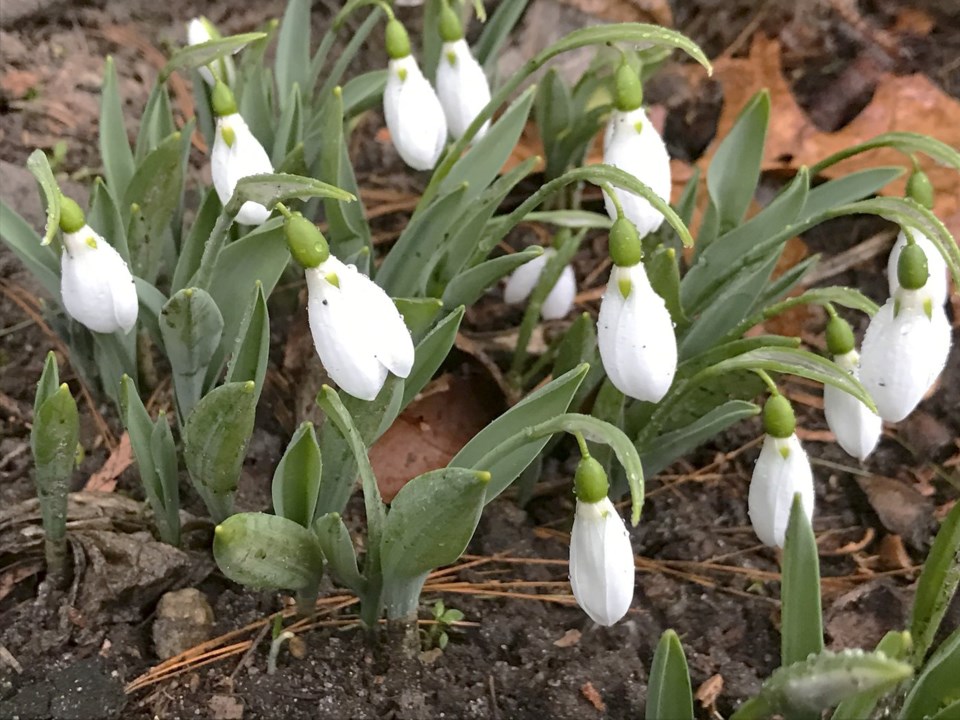As the summer garden winds down, it’s time to think about spring flowers, and the best way to ramp them up would be to plant bulbs now.
We’re all familiar with tulips, daffodils and hyacinths, the popular, colourful — and omnipresent — harbingers of spring. But there’s a class of lesser-known beauties called minor bulbs that may not get as much attention, and that’s unfortunate because they can provide the earliest splashes of colour when our souls need it the most.
Make no mistake: Minor bulbs get their name from their size, not their importance in the garden. Most are less than an inch in diameter, which makes them easy to plant, but their impact is great.
They also tend to “naturalize,” or multiply, each year, and can be planted in large groupings under trees and shrubs or even right in the lawn, where their foliage usually dies down just as mowing season begins. You might even interplant minor bulbs with tulips and daffodils to start the party early.
Which bulbs are ‘minor bulbs’?
Perhaps the most well-known of the minor bulbs is the crocus (Crocus spp.), which displays white, cream, purple, lavender, orange or yellow flowers above 2- to 5-inch-tall stems and grassy foliage.
Winter aconite (Eranthis hyemalis) is another ground-hugger, reaching only 3 to 6 inches tall. Its shiny, upward-facing, yellow, buttercup flowers will unleash a carpet of colour over bare soil or a dormant lawn as you await the beginning of spring. It’s also great in rock gardens.
Snowdrop (Galanthus nivalus) is a 3- to 6-inch plant in the Amaryllis family with dainty, white flowers that bloom in late winter.
Glory of the snow (Chionodoxa) is a lovely 4- to 6-inch plant with tiny, upward-facing, star-shaped blue flowers with white centres.
Grape hyacinths (Muscari) are among the tallest of the minor bulbs. The armeniacum species tops out at roughly 6-8 inches tall with blue or purple, densely packed, urn-shaped flowers reminiscent of tiny grape clusters. The latifolium species, named for its broad foliage, offers similarly shaped but unique colour-blocked, blue-and-purple flowers on foot-tall stems.
Spacing, depth and other bulb-planting tips
Regardless of which bulbs you decide to plant, I’m giving you permission to ignore the spacing recommendations that come with them (you must, however, plant at the recommended depth for each bulb type). This advice applies to major bulbs like tulips, as well.
Never plant any bulbs in single-file rows, which, I promise, will lead to disappointment. Instead, group them together, ideally in drifts of 12, 20, 100 or more. If that sounds expensive, you’re right; it can be. Look for bulbs sold in bags for the best value or buy from catalogues that offer bulk pricing (I’ve also had good results with some I purchased at a warehouse club).
When planting directly into the lawn, don’t fret about placement. Just toss a handful of bulbs into the air and plant them where they land. In spring, they’ll look like they’ve been there for years. Trust me on this.
No need to fertilize them now. Those little bulbs contain all they need to survive winter, grow, thrive and bloom. The time to feed them, if necessary, is right after their flowers die down in spring.
To discourage critters from making a winter meal of your spring garden, add a handful of crushed oyster shells to each hole or cover a bed of bulbs with chicken wire before backfilling with soil. Plants will grow through the buried wire openings, but squirrels and other digging animals won’t be able to gain access. If burrowing creatures are a problem, lay the chicken wire both above and below the bulbs before burying, or lay the bulbs in a specially made bulb cage or basket and bury the whole thing.
___
Jessica Damiano writes weekly gardening columns for the AP and publishes the award-winning Weekly Dirt Newsletter. You can sign up here for weekly gardening tips and advice.
___
For more AP gardening stories, go to https://apnews.com/hub/gardening.
Jessica Damiano, The Associated Press


